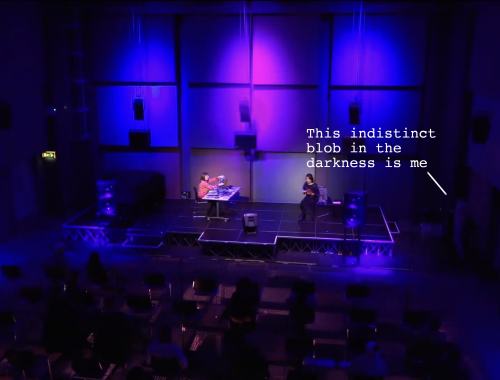Life is Like a Box of Chocolates
I will follow Gibbs’ Cycle (fig. 1) reviewing my experience of leading literacy support sessions, as “reflection is a crucial aspect of the… learning process” (Gibbs, 98).

Description
In January, I increased my placement hours so I could get involved with the school’s literacy support scheme, helping lower-band students. After observing two teacher-led sessions, I was allocated two groups a week, requiring me to prepare activities and monitor progress by writing post-session feedback. After leading multiple successful sessions, I decided to use Lewis Carroll’s poem ‘Jabberwocky’ in a recent lesson.

In this lesson, my Year 9 group, who are normally cooperative and willing to work hard, were uncontrollable! The boys were disruptive, in turn affecting the girls in this group, preventing them from engaging with activities; particularly one student who I had spent multiple weeks working with, who struggles to interact with others, refusing to speak aloud.
Feelings
I was excited but very nervous to take on this new role, feeling the pressure but also somewhat confident from my experience with SEN and nurture groups in the school. Discussing my involvement in literacy support with the teacher, she opened up to me about the challenges she faced:
“How do I support such a wide range of students at differing levels, within one literacy support scheme?”
As I took on this role, this challenge also became my own, and I faced weeks of finding new activities to keep students engaged all term. I was reassured after testing this ‘Jabberwocky’ activity on a KS3 student I tutor. However, from the unruly Year 9 boys’ response, I felt inwardly intimidated and disheartened by the silence that met me from a student who I was confident was making progress – I felt like I was back to square one!
Evaluation
As Gibbs’ method promotes, on reflection, one good aspect of this experience was that I was able to get to know the students I would be working with beforehand, noting their areas of weakness for focus. This was important as even within age and ability categorised groups, differentiation was evident.
To help manage the wide-range of pupils’ needs, I researched, through videos (below) and articles, how to use differentiated instruction effectively in the hope of adapting to each student, with each half of this group requiring different instruction. Edwards’ study on Multiple Learning Approaches found that “during the lesson observations… teachers used a wide variety of pedagogical techniques. On average, four different instructional strategies were used per lesson” (76). So, to utilise active learning, the teacher must be willing to be flexible in their approach. This research had a positive impact on my consequent lessons, leading to clearer instructions and knowing how and when to offer multiple explanations and examples if necessary, so each student could understand.
However, a more negative lesson I learnt is that you should always have multiple activities prepared, as one style does not fit all. This requires more preparation and time-management both inside and outside the classroom, replacing generalised questions with targeted activities. I learnt this through my opening ‘Jabberwocky’ activity being very basic for some students, while the questions requiring evidence and explanation were difficult for others (see below).


Analysis
In an attempt to gain students’ trust, I was perhaps too relaxed and not authoritative enough, letting the Year 9 boys’ behaviour slip in my sessions, rather than demanding respect from the outset, which in hindsight was needed for this particular group. However, I was encouraged by Stronge’s assertion that effective classroom management features an assortment of innovative approaches, methods, and strategies to engage students in the classrooms (2010), so I endeavoured to work out what these approaches may be for these boys. It was recommended by a past teacher that I use Mark Roberts’ technique: “Rephrase to Amaze” to motivate them, and magically, it worked! Pleased that they had come up with a great answer and impressed not only the teacher, but their peers too, the boys began to engage. It turns out, earning bragging rights is very important with your “mates” at the age of 12…
Conclusion
I should’ve balanced prioritising the students’ capability and entertainment of reading nonsense language aloud, with the silly distraction arising from the ‘funny words’ and intimidation of not understanding them, when I got students to read alternate stanzas of the poem aloud. Instead, I could’ve read the poem or played a recording allowing students to listen and follow along on printed copies.
Additionally, I could’ve creatively adapted activities to help students who struggle to verbally express themselves, finding alternative forms of information sharing, as suggested on Reading Rockets, which inspired the activity in Figure 7.
Action Plan
This week, I will reuse this lesson plan with a different group of students in order to see improvement, making changes to how the lesson ran previously. I will play this video reading of the poem, featuring animated images to aid understanding:
As mentioned above, to adapt the lesson for students struggling with verbal communication, I have prepared more creative activities like identifying word classification using shapes and colours as visual markers. Similarly, using drawing, based on the poem’s descriptions helps students to process and visualise the imagery being used.


“Life is like a box of chocolates… you never know what you’re gonna get!”
Forrest Gump
I have learnt that schools are a bit like this box of chocolates… a mixed bag, with mixed abilities, behaviours, needs and challenges. But I have learnt to think on my feet, expect the unexpected, be open-minded and flexible in my teaching style, and this is what helps produce a balanced mix, making up the oh-so-sweet chocolate box of school life!
Bibliography:
- ““Jabberwocky”: One of literature’s best bits of nonsense”. YouTube, uploaded by TED-Ed, 17th September 2020, https://youtu.be/GLQos7-Vq8M (Accessed on 22nd March 2022).
- “Using Differentiated Instruction to Support All Learners”. YouTube, uploaded by YourAlberta, 10th April 2018, https://youtu.be/OqlXSV7By_s (Accessed on 24th March 2022).
- Bulloch, Kathleen. ‘How to Adapt Your Teaching Strategies to Students Needs’. Available at: https://www.readingrockets.org/article/how-adapt-your-teaching-strategies-student-needs (Accessed on 22nd March 2022).
- Edwards, Susan. “Active Learning in the Middle Grades Classroom: Overcoming the Barriers to Implementation.” Middle Grades Research Journal, vol. 10, no. 1, Spring 2015, pp. 65–81. EBSCOhost, https://search-ebscohost-com.queens.ezp1.qub.ac.uk/login.aspx?direct=true&db=eue&AN=102933267&site=eds-live&scope=site. (Accessed on 21st March 2022).
- Gibbs, Graham. Learning by Doing. Oxford: Oxford Centre for Staff and Learning Development, 1988, Oxford Brookes University.
- Michaylova, Elena. “Chocolate assortment stock illustration”, iStock by Getty Images. 8th July 2012, https://media.istockphoto.com/vectors/chocolate-assortment-vector-id149462232?k=20&m=149462232&s=612×612&w=0&h=vsrj-pn8YX8F1hUFCm_Vku_4-JhjdUDTABdygAWjCRI=
- Roberts, Mark. ‘What can schools do to motivate boys?’. 2021. Available at: https://www.tes.com/magazine/teaching-learning/general/what-can-schools-do-motivate-boys (Accessed: 22 March 2022).
- Stronge, James. Effective Teachers-Student Achievement: What the Research Says. 2010, London, UK: Routledge.
- —. Evaluating What Good Teachers Do: Eight Research-Based Standards for Assessing Teacher Excellence. 1st ed., 2010, London, UK: Routledge.
- University of Sheffield. “Reflective Practice”. Available at: https://www.sheffield.ac.uk/ssid/301/study-skills/university-study/reflective-practice (Accessed on 21st March 2022).
The Teacher Toolkit
You Gotta Have Faith
You May Also Like

An Experience Never To Forget
1 April 2022
Teamwork Makes the Stream Work
27 March 2022
